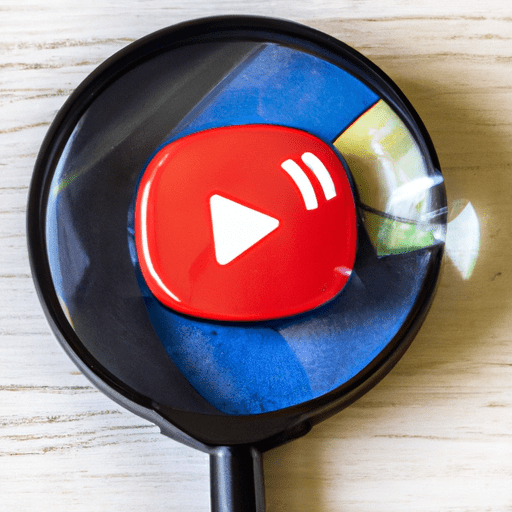So you’ve started your very own YouTube channel and you want to make sure it gets noticed amidst the sea of content on the platform. That’s where Search Engine Optimization (SEO) comes in. You may have heard the term before, but what exactly does it mean when it comes to optimizing your YouTube channel? In simple terms, SEO for YouTube involves implementing strategies to improve your channel’s visibility and ranking in search results. In this article, we’ll explore some effective techniques to help you optimize your YouTube channel and attract the right audience to your videos.
What is Search Engine Optimization (SEO)?
Search Engine Optimization (SEO) refers to the strategies and techniques used to improve the visibility and ranking of web pages on search engine results pages (SERPs). It involves optimizing various aspects of a website or online content to increase organic (non-paid) traffic from search engines like Google, Bing, and Yahoo.
Definition
SEO is the practice of optimizing web pages and online content to rank higher on search engine results pages (SERPs) and increase organic traffic. It involves optimizing various elements, such as keywords, titles, descriptions, tags, and more, to make it easier for search engines to understand and rank them.
Importance
SEO plays a crucial role in attracting visitors to websites and online platforms, including YouTube channels. By implementing SEO best practices, you can improve your chances of being found by potential viewers and increase your channel’s visibility.
Goals of SEO
The primary goals of SEO for YouTube channels include:
-
Increasing organic traffic: By optimizing your videos and channel, you can attract more viewers from search engines and increase your organic traffic.
-
Improving visibility: Higher rankings on search engine results pages lead to increased visibility, making it easier for people to find your videos and channel.
-
Enhancing user engagement: SEO helps you create content that resonates with your target audience, leading to higher engagement, such as likes, comments, and shares.
Why is SEO important for YouTube channels?
With over 2 billion logged-in monthly users, YouTube is a highly competitive platform. To stand out among millions of videos uploaded every day, implementing SEO techniques is crucial for success.
Increased visibility
By implementing SEO strategies on your YouTube channel, you increase your chances of appearing in top search results for relevant keywords. This increased visibility allows your videos to reach a wider audience and attract new viewers.
Increased traffic
Appearing on the first page of search results significantly boosts the likelihood of attracting clicks and viewers. Higher rankings mean more people will click on your videos, resulting in increased traffic to your channel.
Improved user engagement
SEO involves optimizing your content to make it more appealing and relevant to your target audience. By creating engaging videos that resonate with viewers, you encourage likes, comments, shares, and subscriptions, ultimately building a loyal community around your channel.
This image is property of images.unsplash.com.
Keyword Research
Keyword research is a vital component of SEO, helping you understand the topics and phrases your target audience is searching for. By incorporating relevant keywords into your video titles, descriptions, tags, and content, you increase your chances of ranking higher in search results.
Choosing relevant keywords
Begin by researching keywords that are relevant to your video’s subject or niche. Consider what terms viewers might use to find content like yours. Tools such as Google Trends, YouTube Autocomplete, and Keyword Planner can help generate keyword ideas.
Using keyword tools
Various tools are available to assist in optimizing your keyword selection. Tools like VidIQ, TubeBuddy, and Google Keyword Planner provide data on search volume, competition, and related keywords. Leverage these tools to identify highly searched terms with manageable competition.
Analyzing search volume and competition
When selecting keywords, strike a balance between search volume and competition. High-volume keywords may be competitive, making it difficult to rank, while low-volume keywords may not attract enough traffic. Aim for a mix of high, medium, and low-volume keywords to optimize your reach.
Optimizing Video Titles
Video titles play a crucial role in attracting viewers and improving searchability. By following these optimization techniques, you can enhance your video titles and increase their effectiveness.
Using target keywords
Incorporate your target keywords naturally into your video titles. This helps search engines understand the content of your videos and improves their chances of being ranked for relevant searches.
Keeping titles concise and compelling
Ensure your titles are concise while clearly conveying the main theme of your video. A compelling title piques curiosity and entices viewers to click, increasing the chances of engagement.
Avoiding clickbait
While it’s essential to create catchy titles, it’s crucial to avoid misleading viewers with clickbait. Misrepresenting the content in your video not only harms your channel’s credibility but also leads to negative user experiences and lower engagement.
This image is property of images.unsplash.com.
Writing Video Descriptions
Video descriptions provide an opportunity to provide additional context and information about your video. By optimizing your descriptions, you can improve your search rankings and attract more viewers.
Using keywords naturally
Incorporate your target keywords naturally throughout your video description. The first few sentences are particularly important, as they are often displayed in search engine results. However, avoid keyword stuffing, as it can harm your channel’s visibility.
Including timestamps and links
Adding timestamps to your video description helps viewers navigate different sections of your video more easily. Additionally, consider linking to relevant resources, social media pages, or your website to provide additional value to your viewers.
Optimizing the first few lines
Since only a portion of your video description is visible in search engine results, optimize the first few lines to grab viewers’ attention. Use concise and engaging language to entice users to click on your video.
Tags and Categories
Tags and categories help classify and categorize your videos, making them more discoverable. Properly utilizing tags and categories can significantly improve your channel’s visibility and attract a relevant audience.
Using descriptive tags
Choose tags that accurately describe the content of your videos. Use a mix of broad and specific tags to cover both general topics and niche keywords. This helps search engines understand your video’s content and rank it appropriately.
Making use of relevant categories
Categorize your videos under relevant topics or themes offered by YouTube. Selecting the appropriate categories helps your videos appear in the right sections of YouTube’s search results and recommended videos.
Avoiding excessive tagging
While it’s important to use adequate tags, avoid over-tagging your videos. Using too many tags or unrelated tags can confuse search engines and potentially harm your channel’s visibility. Select tags that are directly relevant to your video’s content.
This image is property of images.unsplash.com.
Optimizing Thumbnails
Thumbnails serve as the visual representation of your videos and can greatly influence a viewer’s decision to click. By optimizing your thumbnails, you can attract more attention and increase click-through rates.
Creating eye-catching thumbnails
Design visually appealing thumbnails that are consistent with your channel’s branding. Utilize contrasting colors, bold fonts, and captivating images to grab viewers’ attention and entice them to click on your videos.
Including relevant text and images
Incorporate text in your thumbnails that accurately represents the video’s content. Use engaging phrases, keywords, or questions to give viewers a glimpse of what they can expect. Additionally, choose images that are visually appealing and relevant to the video.
Maintaining consistency
Maintain consistency in your thumbnail designs to make them easily recognizable. This creates a sense of familiarity among your viewers and increases the chances of them clicking on your videos.
Engaging Video Content
Creating engaging and valuable video content is crucial for attracting and retaining viewers. By optimizing your video content, you can keep your audience entertained, informed, and coming back for more.
Creating high-quality videos
Invest in video production equipment that ensures good video and audio quality. Clear visuals, crisp audio, and smooth editing enhance the overall viewing experience and contribute to viewer engagement.
Producing valuable and engaging content
Craft videos that provide value to your target audience. Whether it’s educational, entertaining, or inspirational content, focus on creating videos that resonate with your viewers and keep them coming back for more.
Optimizing video length and structure
Consider the attention spans of your target audience when determining video length. While some topics warrant longer videos, others may benefit from more concise content. In addition, organize your video’s structure in a logical and cohesive manner to enhance viewer understanding and engagement.
Encouraging User Interaction
Encouraging interaction with your viewers is essential for fostering a sense of community and building a loyal subscriber base. By implementing interactive features, you can promote likes, comments, shares, and subscriptions.
Promoting likes, comments, and shares
Encourage viewers to engage with your videos by asking them to like, comment, and share. This can be done through verbal requests within the video or by utilizing on-screen prompts and call-to-action overlays.
Asking viewers to subscribe and click the notification bell
Remind viewers to subscribe to your channel and click the notification bell to receive updates whenever you upload new content. Subscriptions increase your chances of appearing in users’ recommended videos and help build a loyal audience.
Using interactive features like end screens and cards
Take advantage of YouTube’s interactive features, such as end screens and cards, to further engage your audience. These features allow you to promote related videos, playlists, subscribe links, and external websites, providing additional value to your viewers.
Analytics and Optimization
Monitoring the performance of your YouTube videos and making data-driven optimizations is crucial for long-term growth. By analyzing viewer retention, engagement metrics, and other data, you can optimize your content and channel for better results.
Monitoring video performance with YouTube Analytics
Utilize YouTube Analytics to gain insights into various performance metrics, including views, watch time, and audience demographics. Regularly review this data to identify trends and patterns that can guide your optimization efforts.
Analyzing viewer retention and engagement
Pay close attention to viewer retention metrics, such as average view duration and audience retention. Analyze which parts of your videos are losing viewers and identify opportunities to improve the content and keep viewers engaged.
Making data-driven optimizations
Use the insights gained from analytics to make informed optimizations. Experiment with different video lengths, content formats, and keywords to improve your videos’ performance and grow your channel organically.
By implementing SEO strategies on your YouTube channel, you can increase your visibility, attract more viewers, and create engaging content that resonates with your target audience. With consistent effort and continuous analysis, you can optimize your videos and channel to achieve long-term success on YouTube.




